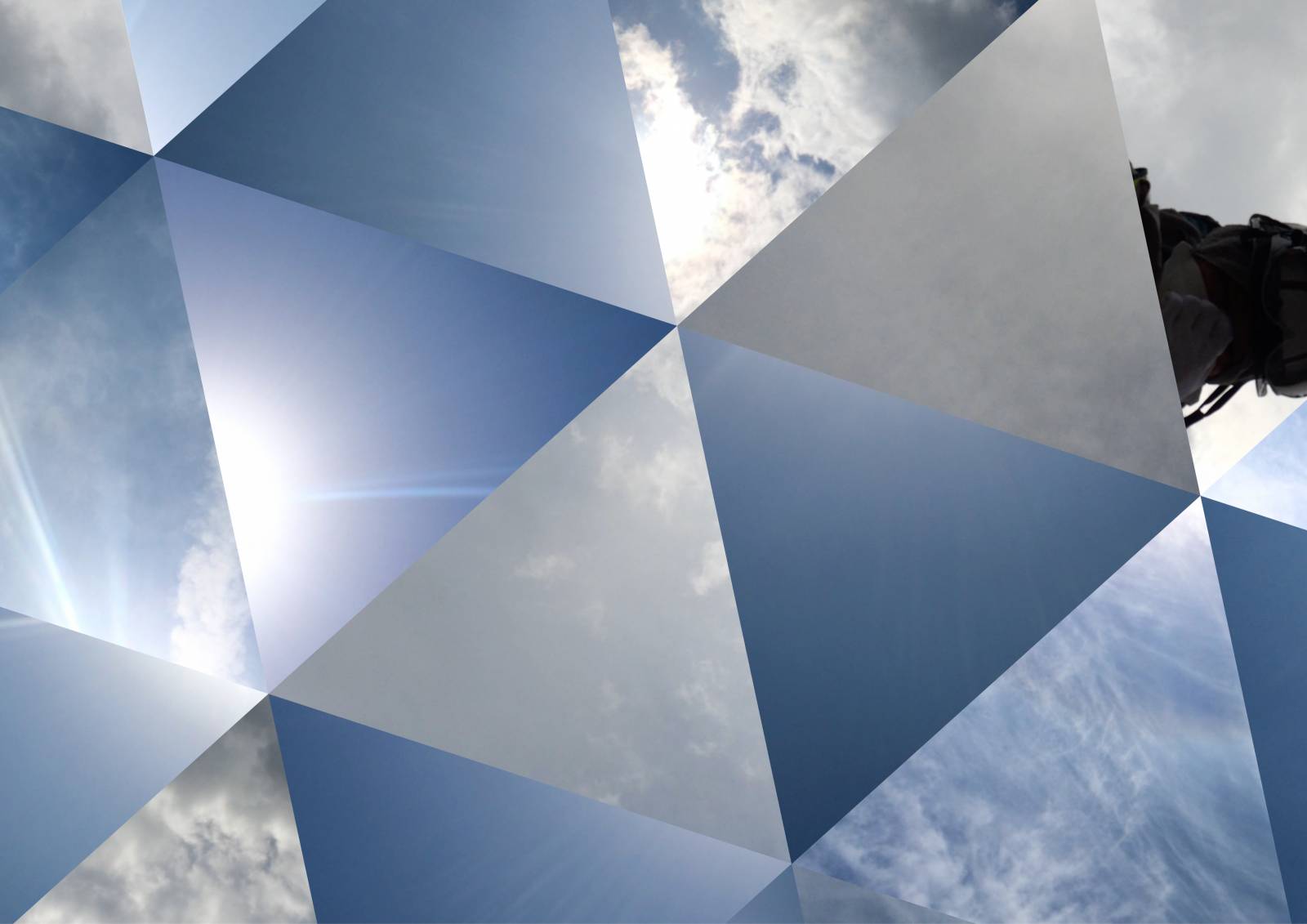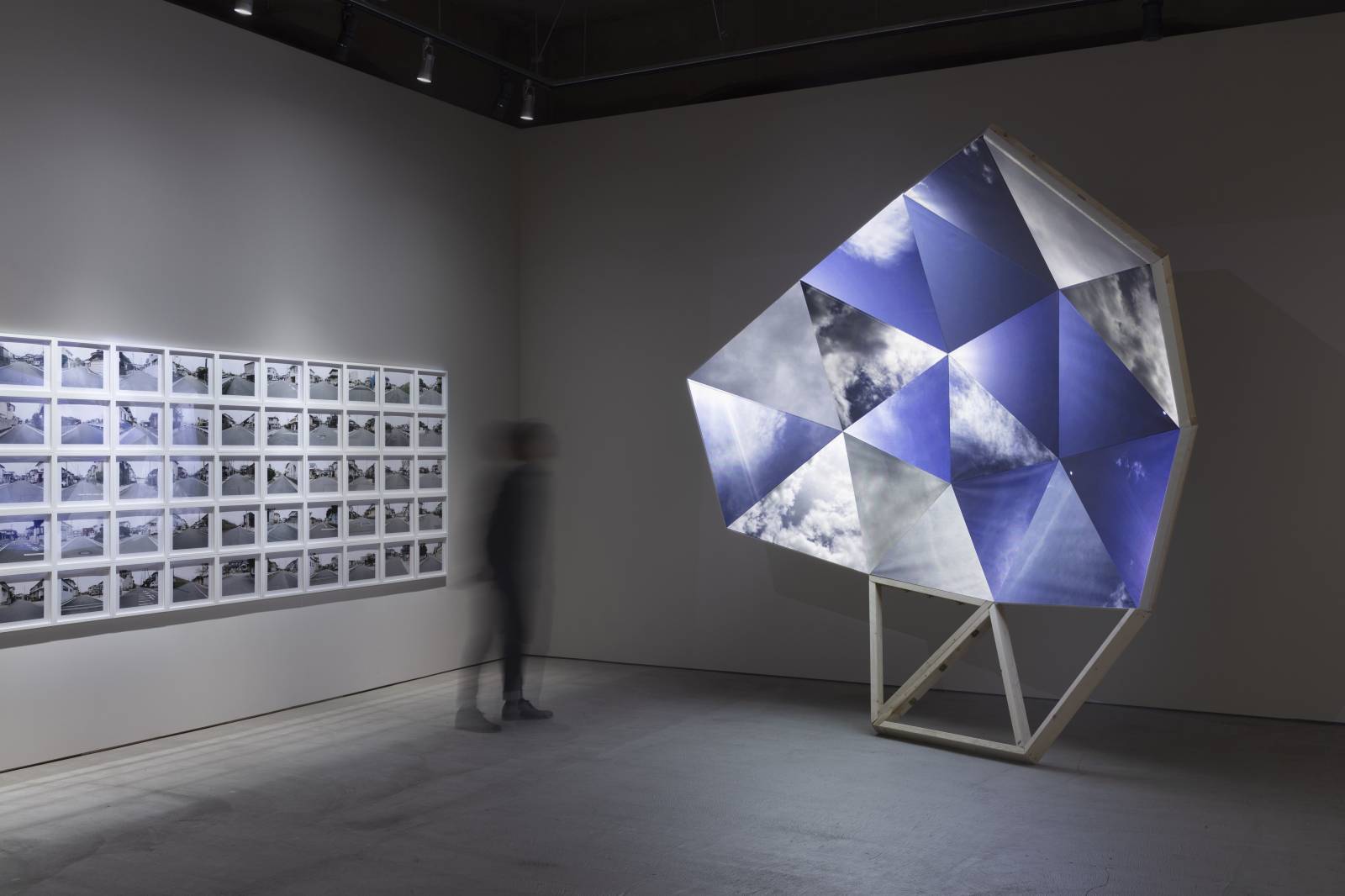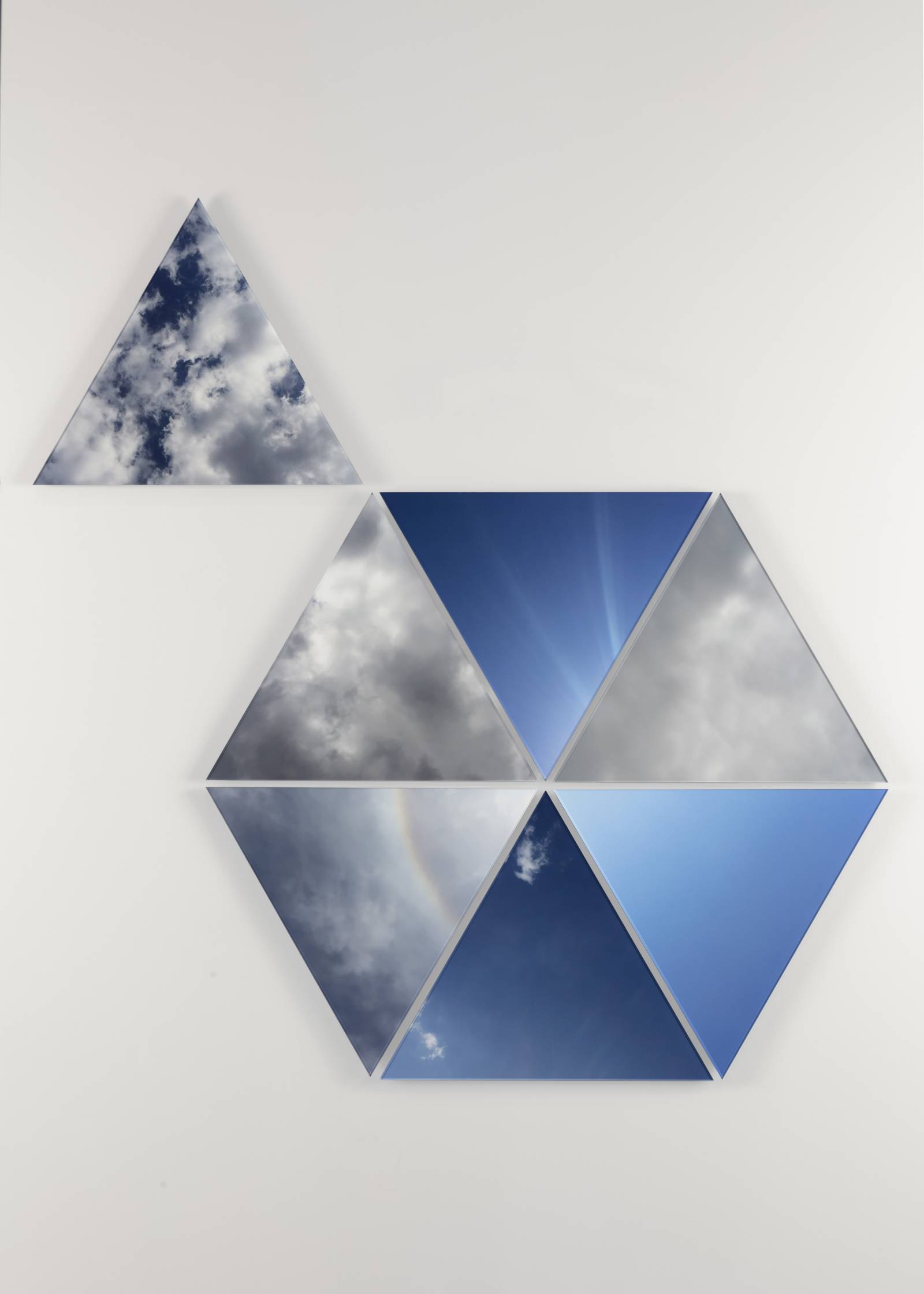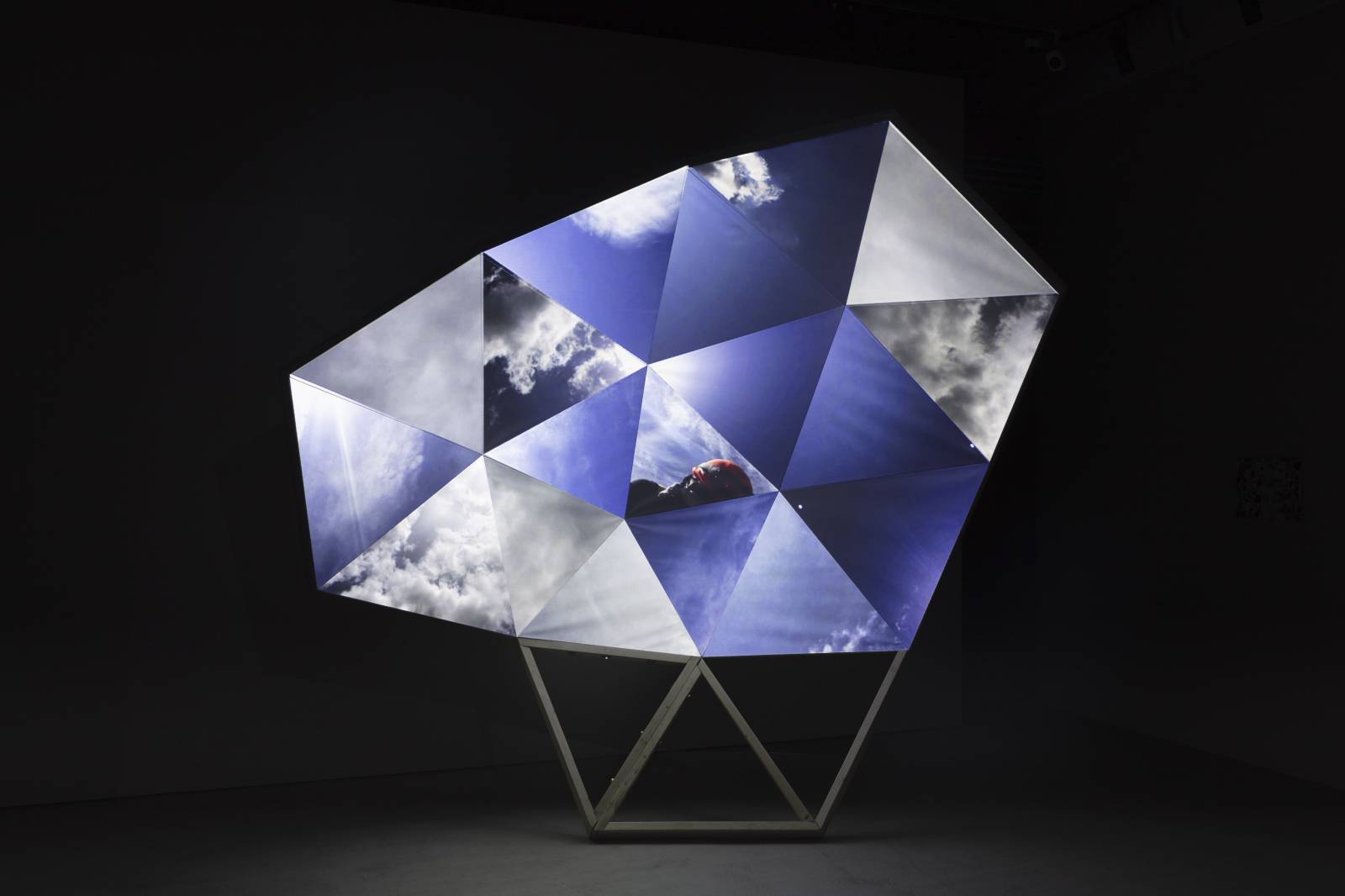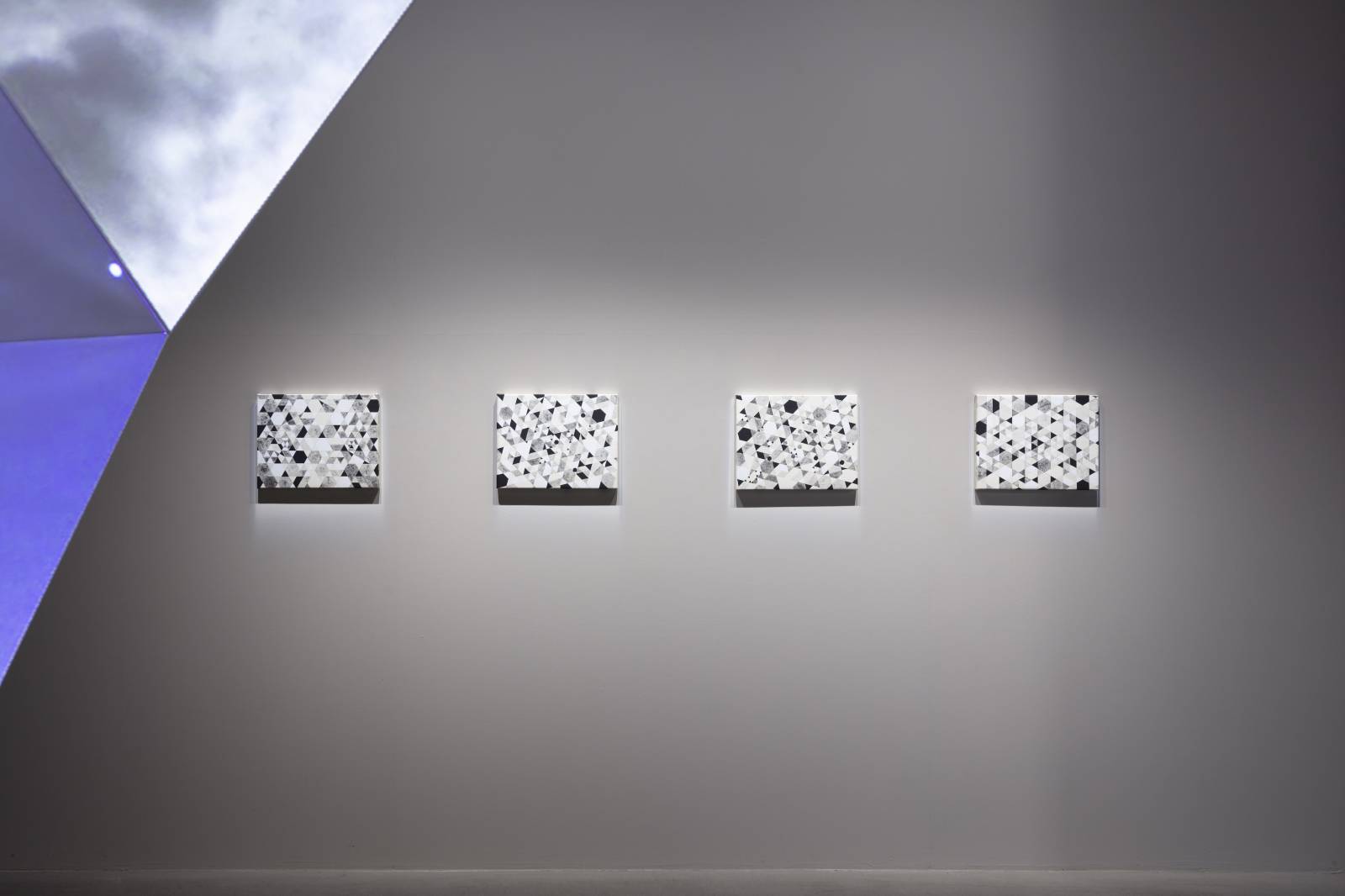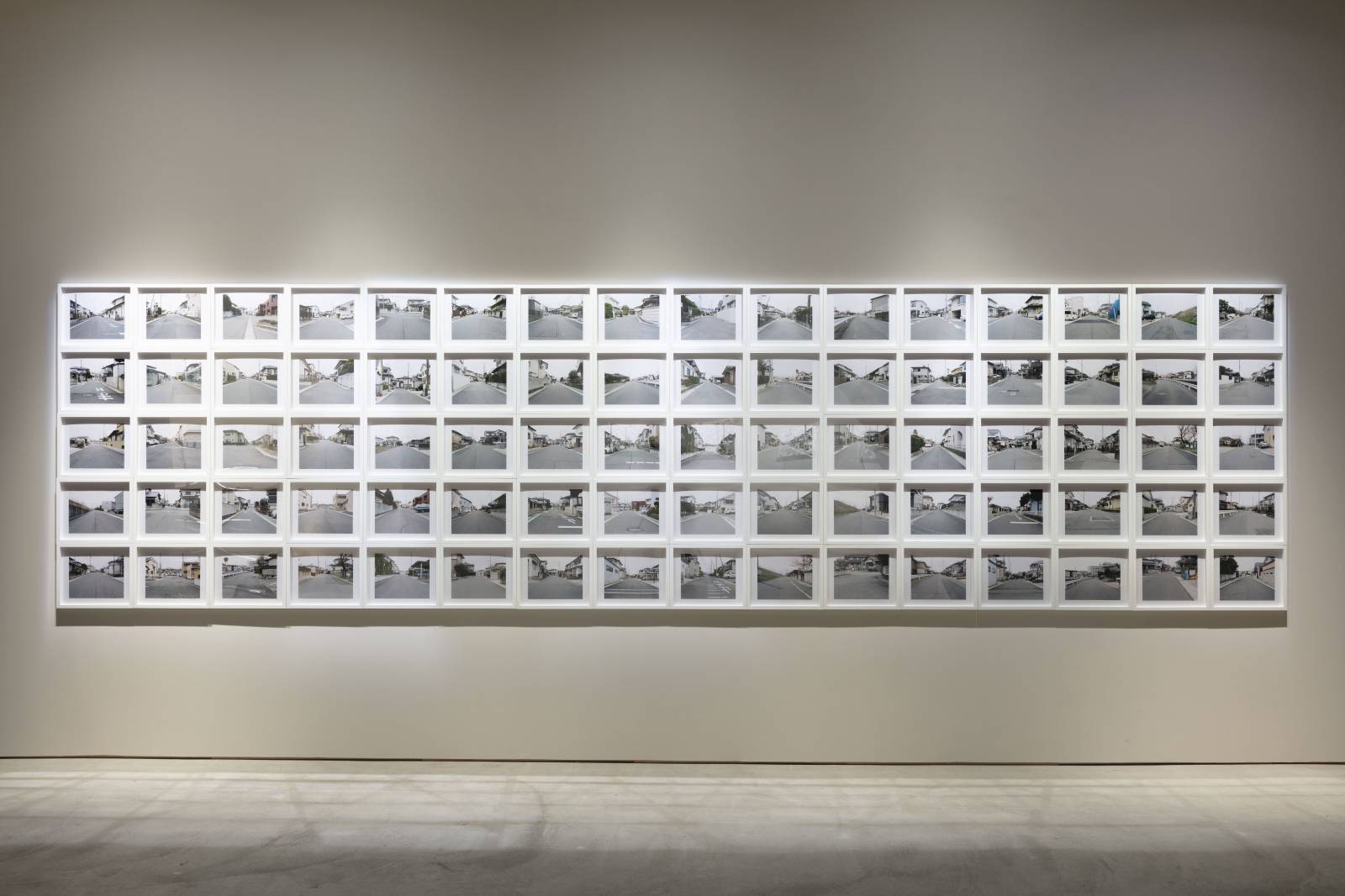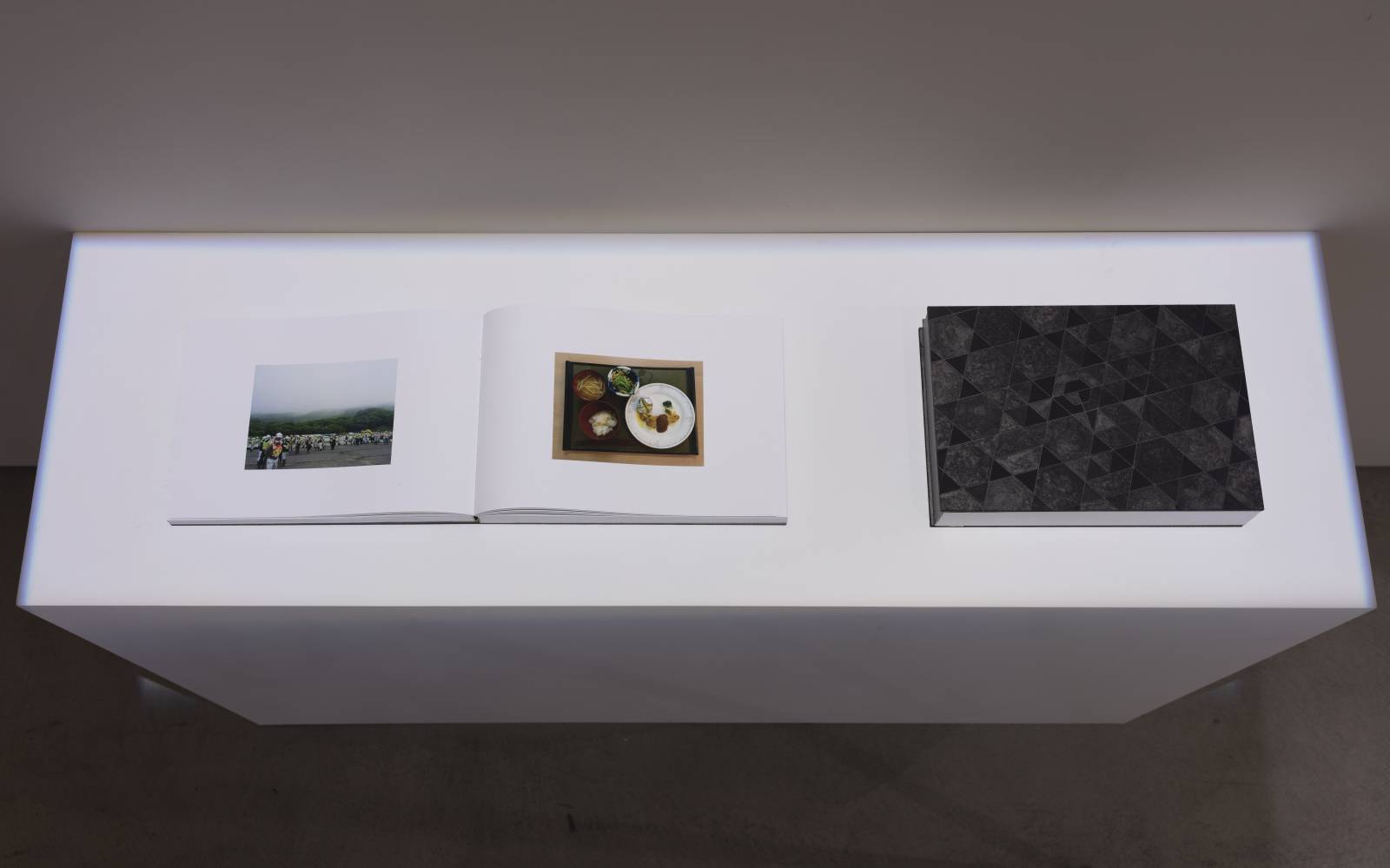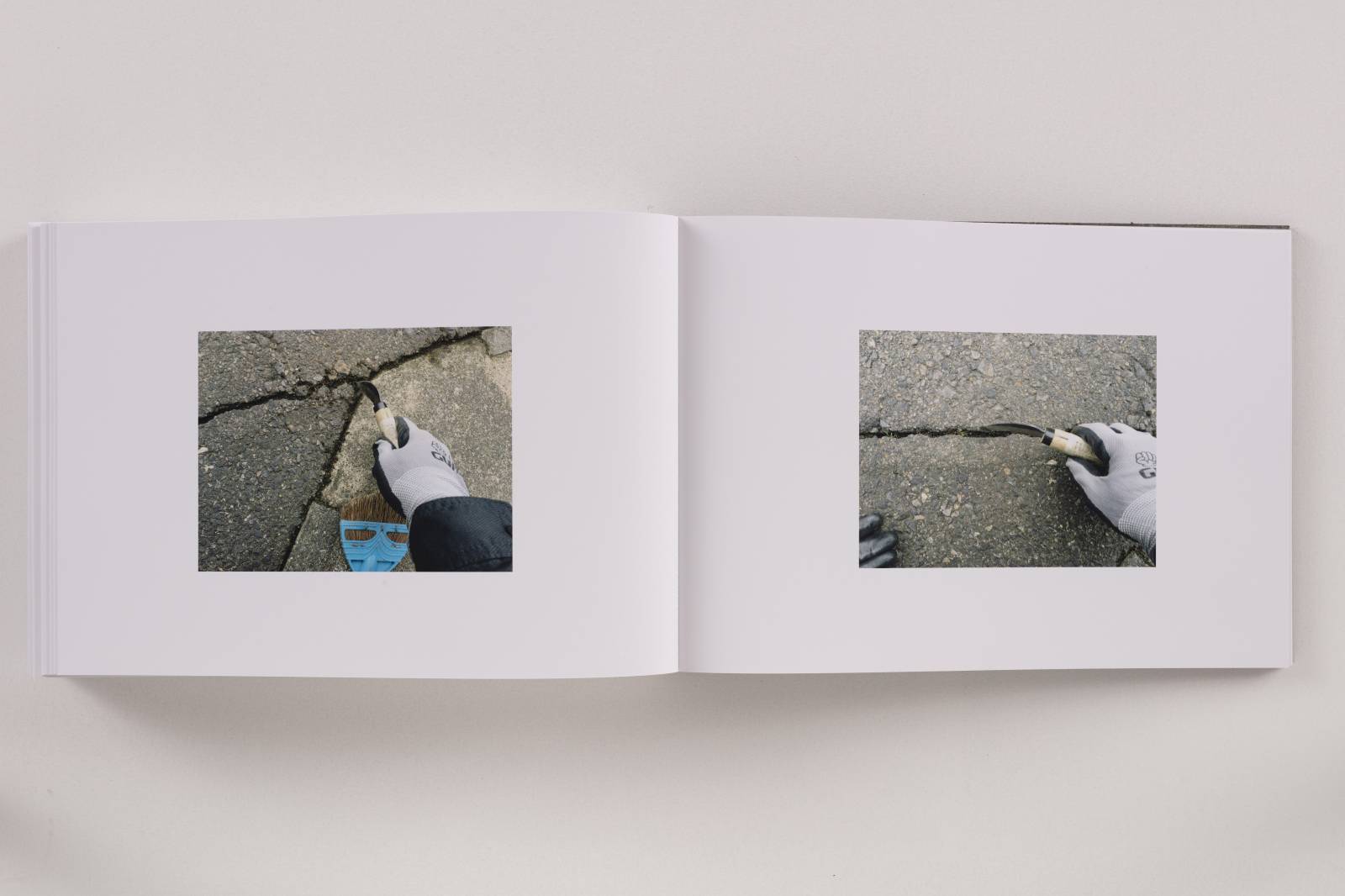Masaru Iwai | Control Diaries
5 September - 10 October, 2020
Venue : Takuro Someya Contemporary Art
Takuro Someya Contemporary Art is pleased to announce Control Diaries, a solo exhibition by Masaru Iwai held from September 5 to October 10. It has been three years since Iwai’s previous solo exhibition at TSCA, Perspective of Familiarity.
This exhibition focuses primarily on video installation, along with paintings and a series of 80 photographs that serve as a private record of decontamination in which the artist took part.
“Photo Diary,” which spans 398 pages, is a chronological compilation of photographs taken by Iwai on his smart phone during the three years in which he intermittently took part in decontamination work. Viewers are able to infer from the photographs the workers’ interactions with each other, the sites on which they worked, and their personal lives. Capturing details not covered in the news media, such as beautiful flowers growing at the edges of the street or daily mealtimes, the photographs provide a rare insight into decontamination as seen from the perspective of the workers. Each book is bound by a cover with a unique graphite and pencil drawing.
This exhibition features paintings, unusual for Iwai, which are also made with graphite. The material graphite also served as a focus for Iwai’s “Broom Stars” for Yokohama Triennale 2020. These paintings take the hexagon as their motif, the shape derived from the molecular structure of graphite, repeated to form a monochromatic chart of black and white. In its most familiar state, graphite is the lead found in our pencils, and at the same time it was also the material used as the neutron moderator in the world’s first nuclear reactor. Though light-water reactors are most common in present-day Japan, graphite moderated reactors are still used elsewhere throughout the world. And it was with plutonium produced in the world’s first nuclear reactor (graphite) that ”Fat Man,” the nuclear bomb dropped on Nagasaki, was created.
The series of 80 photographs, depicting nondescript neighborhoods that could seemingly be found anywhere, are in fact images of streets post-decontamination, taken by Iwai on his own medium format camera on Sundays and other days off. Upon close examination, the images reveal streets that are completely devoid of cigarette butts, or even small rocks or weeds growing out of the cracked asphalt. The tops of the gutters have been washed white with a pressure hose, creating a contrast with the dirty fences of the homes lining the street. These post-decontamination photographs, referred to as records of “the world’s cleanest street” by Iwai, also lack any people, bringing to mind our present moment and the lockdown period.
Recordings of the sky, which are projected onto the built structure, were made by Iwai for one minute each day using his phone. They not only capture each day’s weather, but also serve as records of the physical burden experienced by the workers, who labored on rooftops that could at times reach temperatures over 70 degrees Celsius. Iwai’s plan for the sky is to take all of the records, of which no two are alike, and recreate one sky from all of the pieces. Onto roughly 100 faces of a geodesic dome, Iwai would project or screen the individual recordings to create one complex sky, simultaneously beautiful and tainted by contamination invisible to the eye. The current installation of 18 triangular faces serves as a test for future iterations of this work.
Iwai employed the ethnographic method of participant observation, in which one participates in group activities while recording them, placing himself into the various work sites where decontamination work was being performed as a means of artistic production in these works. The streets and skies in Iwai’s works do not point to a specific “here,” instead taking the consistent position of “could be anywhere.” Perhaps it is because Iwai spent time decontaminating what lay within clearly defined boundaries that his mind turned toward the streets and the skies, which expand endlessly and defy boundaries in this way. Recording, then restructuring, these actions on the same horizon as washing and purification, as “decontamination,” transforms the specific event into something connected to the larger world.
Currently, Iwai’s participatory artwork “Broom Stars” is being featured in Yokohama Triennale 2020 Afterglow, ongoing until October 11. The work includes online discussions with participants as well as acts of cleaning. In addition, Iwai is also participating in group exhibition Identity XVI – My Home? - curated by Kenichi Kondo, curator of the Mori Art Museum, on view at nichido contemporary art until September 26.
Masaru Iwai was born in Kyoto in 1975. He received his Ph.D. in Fine Arts at Tokyo University of the Arts in 2009. Iwai produces works in various media, with a particular focus on video but also installation and performance, centered on the concept of cleansing (washing and purifying).
Iwai’s works have been exhibited, among others, at the Whitney ISP Program Maintenance Required (The Kitchen, New York), Needless Cleanup (MeetFactory, Prague), Unfixed Perspectives (Yokohama Civic Art Gallery, Yokohama), and Reborn-Art Festival 2017. His solo exhibitions include Prisoner of habit-seeing, play, sucking thumb (Biyong Point, Art Center Akita, Akita), Passing place, passing thing (Takuro Someya Contemporary Art, Tokyo), and Perspective of Familiarity (Takuro Someya Contemporary Art, Tokyo). In 2016, Iwai participated as a collaborator in the direction of theater performance “x / groove” (choreography by Sebastian Matthias), performed in four cities in Japan and Germany.
Exhibition Details
Masaru Iwai | Control Diaries
Exhibition period: Saturday, September 5 – Saturday, October 10
Opening hours: Tuesday – Saturday 12:00 – 18:00 (*limited hours)
Venue: Takuro Someya Contemporary Art
TERRADA Art Complex 3F TSCA
Higashi Shinagawa 1-33-10, Shinagawa-ku, Tokyo 140-0002
TEL 03-6712-9887 | FAX 03-4578-0318 | E-MAIL: gallery@tsca.jp
Our Commitment to Safety During COVID-19
We will continue to operate on limited hours, from 12:00PM-6:00PM.
In order to prevent the further spread of COVID-19, we will take the following additional actions:
- All visitors will be required to wear a mask upon entry into the gallery
- All visitors will be asked to disinfect their hands with alcohol spray at the entrance
- Entrance will be limited to 3 people at one time
- We ask that anyone with the following symptoms refrain from visiting the gallery:
* Temperature over 37 degrees Celsius
* Any cold symptoms (including fever, coughing, sneezing, sore throat)
* Strong fatigue or difficulty breathing
* Received a COVID-19 diagnosis or been in close recent contact with someone who has received a COVID-19 diagnosis
* Other concerns about their health
Gallery staff will monitor their health daily, including temperature checks, and take part in other preventative measures such as wearing a mask while working.


